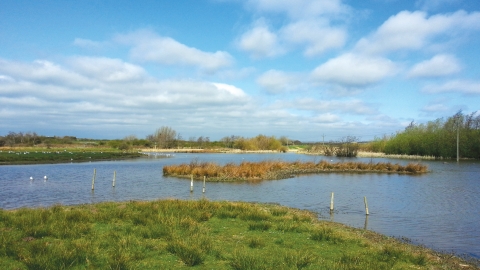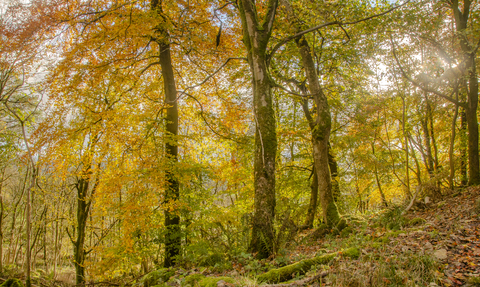
Filey Dams Nature Reserve
Location
Know before you go
Dogs
When to visit
Opening times
Open at all times. We recommend a 1 hour trip for this reserve but if you’re by the coast for the day, you can also explore Filey Brigg and cliffs, Flamborough Cliffs and RSPB Bempton Cliffs.Best time to visit
June to SeptemberAbout the reserve
Set back from the town centre on the edge of a housing estate, Filey Dams is the last remaining freshwater marsh of any size in the area, making it a magnet for migratory birds. Not just that: it’s home to a variety of insects, amphibians, small mammals and plants, and with three viewing hides along a short path it’s one of our easiest reserves to get around. The hides provide excellent views across the reserve and often close views of the birds. It’s worth checking the pool edges for water rails and snipe.
The Dams is a pit-stop where migrating birds can refuel. Alongside regular migrants, which include greenshank and dunlin plus common, green and wood sandpipers, every year something surprising turns up. Spoonbills and little egrets are increasingly seen, and yellow-browed warblers are among the smaller autumn visitors.
Look for tree sparrows on your short walk through the copse to the boardwalk, and on to a pond-dipping platform, where dragonflies skim the water and water voles hide. All three British species of newt can be found here – smooth, palmate and great crested.
Contact us
About
This quiet gem consists of large freshwater lagoons surrounded by marsh and grassland grazed with cattle. Soft rush dominates, joined in the shallow water by toad rush, bottle sedge and branched bur-reed and the distinctive yellow flag iris.
A short walk from the car park and the adjacent main hide takes in a small copse with nestboxes used by tree sparrows, and leads along a boardwalk to a pond-dipping platform at the edge of a quiet pool. Here dragonflies skim the water settling on the mat of amphibious bistort; the fortunate might see a water vole but are more likely to hear them crunching their way through the soft stalks of water forget-me-not. All three British species of newt occur here – smooth, palmate and great crested, the latter species in nationally important numbers.
Walk further along the boardwalk and arrive at the East Pool hide where close views can be had of water birds such as little grebe and migratory waders such as greenshank, green and wood sandpipers in the autumn. Across the pool the barn owl box may be occupied, the male often sitting nearby when displaced by his family.
The reserve boasts healthy populations of a variety of moths, including small rufous and old lady. In turn many of these provide food for bats that include Nathusius' pipstrelle and Daubenton's bat.
The nature reserve is leased from Scarborough Borough Council and is managed in partnership with Filey Brigg Ornithological Group, who record the species of the area and carry out routine maintenance.
Seasonal highlights
- Spring: Birds - Broad-bodied chaser; Willow warbler; Sedge warbler; Mammals - Water vole
- Summer: Amphibians - Great crested newt; Birds - Green sandpiper, Barn Owl; Wood sandpiper; Mammals - Nathusius' pipistrelle; Daubenton's bat
- Autumn: Invertebrates - Common darter; Birds - Ruff; Greenshank; Dunlin; Curlew sandpiper
- Winter: Birds - Teal; Water rail; Tree sparrow; Great spotted woodpecker
Directions
Public transport
Regular buses and trains serve Filey from Scarborough.
By car
From the roundabout on the A165, head into Filey and turn left at Wharfedale. Follow this road round to the left to the very end and drop down into the small car park. It is a ten minute walk from Filey railway station: turn right down Wharfedale and follow the long crescent round to the left and then along to the end.
Did you know...
Filey Dams was almost lost to development in the 1980s, but FBOG campaigned to save the site and it became a nature reserve.

The autumn colours were even more beautiful when the sun came out
Photo Credit - Telling our Story Volunteer, Sara


